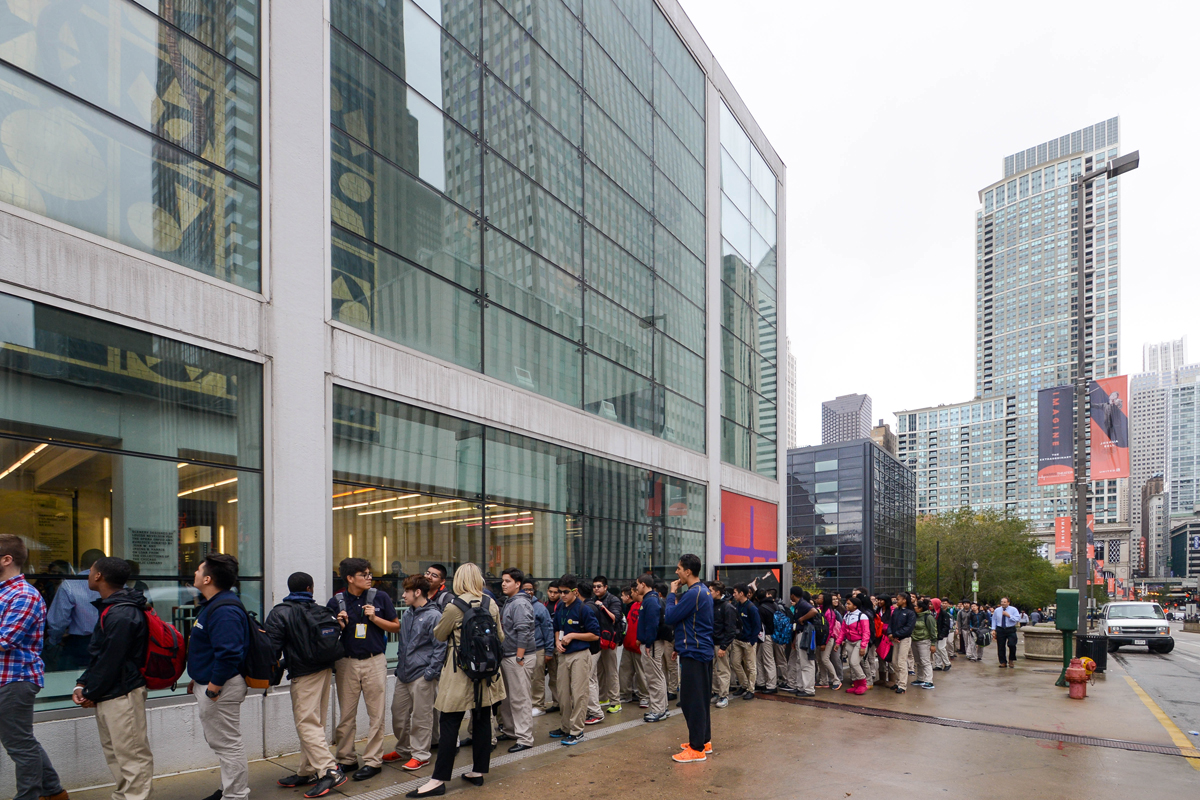This blog was written by Urban Gateways Executive Director Eric Delli Bovi and was originally published on the Americans for the Arts ARTSblog. See the original post here. (Photos from “The Children of Willesden Lane” by Alayna Kudalis.)
Arts educators and advocates are a resourceful bunch. Despite enormous odds over many years against making arts education a priority, more school districts and policy makers are working to find ways to sustain investments in arts teachers, supplies, curriculum design, and professional development. We have a long way to go, but we’re certainly seeing progress; arts education is a part of the educational dialogue in new and vibrant ways. When it comes to arts education policy and priorities, however, we must not forget that learning cannot and should not remain solely within the confines of the four walls of the school classroom. One solution is the often overlooked strategy for fostering students’ personal and academic growth: the good old-fashioned field trip.
 Field trips are a comparatively inexpensive endeavor, but distance, logistics, the time spent away from school (read: less time for test preparation), and lack of funding are often the main reasons for keeping students from experiencing the world beyond the school and neighborhood. We must also contend with the sad misperception that field trips to live performances and museums do not make much of an educational impact. Anyone who makes this argument certainly needs to get out more.
Field trips are a comparatively inexpensive endeavor, but distance, logistics, the time spent away from school (read: less time for test preparation), and lack of funding are often the main reasons for keeping students from experiencing the world beyond the school and neighborhood. We must also contend with the sad misperception that field trips to live performances and museums do not make much of an educational impact. Anyone who makes this argument certainly needs to get out more.
Here in Chicago, Urban Gateways recently connected 6,200 students and teachers across 45 schools to The Children of Willesden Lane, an inspirational music and drama performance; tickets to matinee shows were provided for free as part of a city-wide reading initiative. Many of these students had never experienced a live performance before or even ventured outside their own neighborhood to visit downtown. 100% of the participating teachers and principals who were surveyed reported that they agree or strongly agree that the field trip performance was valuable for their classrooms, that the themes presented were relevant to students, and that their students responded positively to the presentation. Reactions from teachers and students demonstrate a meaningful and lasting impact from this field trip experience:
The students got to experience history they were unfamiliar with and an art form they didn’t know. It is an incredible jumping off point for our students to start to explore their own family histories. –Teacher
I’ve never heard a live piano before. It was amazing! –Student
I am not sure if this is true for other children, but the story made me realize that we should always be brave and that we should at least try to pursue our dream no matter how hard it is, that is why we have to work hard now. –Student
These reflections by students and teachers who experienced The Children of Willesden Lane give us much to consider: How can we take collective action to prioritize field trips for every  grade level in order to educate and inspire students, connect them to their community, and actively foster future generations of art appreciators?
grade level in order to educate and inspire students, connect them to their community, and actively foster future generations of art appreciators?
With that overarching question concerning arts field trips in mind, here are some simple questions that you can ponder on behalf of the young people in your community:
• What are the arts and cultural resources in your city, town, neighborhood, or region? • Does every child in your community have access to live performances, museums, or other arts and culture resources? If not, how can you contribute to providing equitable access? • Does your school or district invest funds for buses in addition to arts teachers and supplies?
Many arts and cultural institutions already significantly invest in making field trip experiences for students educational, enjoyable, organized, and accessible. Field trip policy and advocacy are a critical part of any arts plan for truly leveraging your community as a classroom.
Please share your favorite field trip memory. How did it impact your life?
